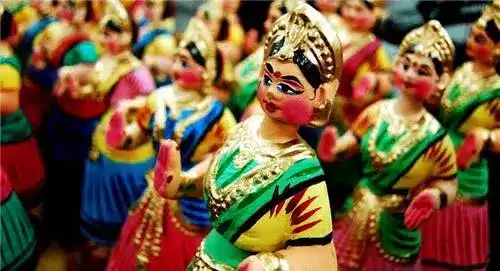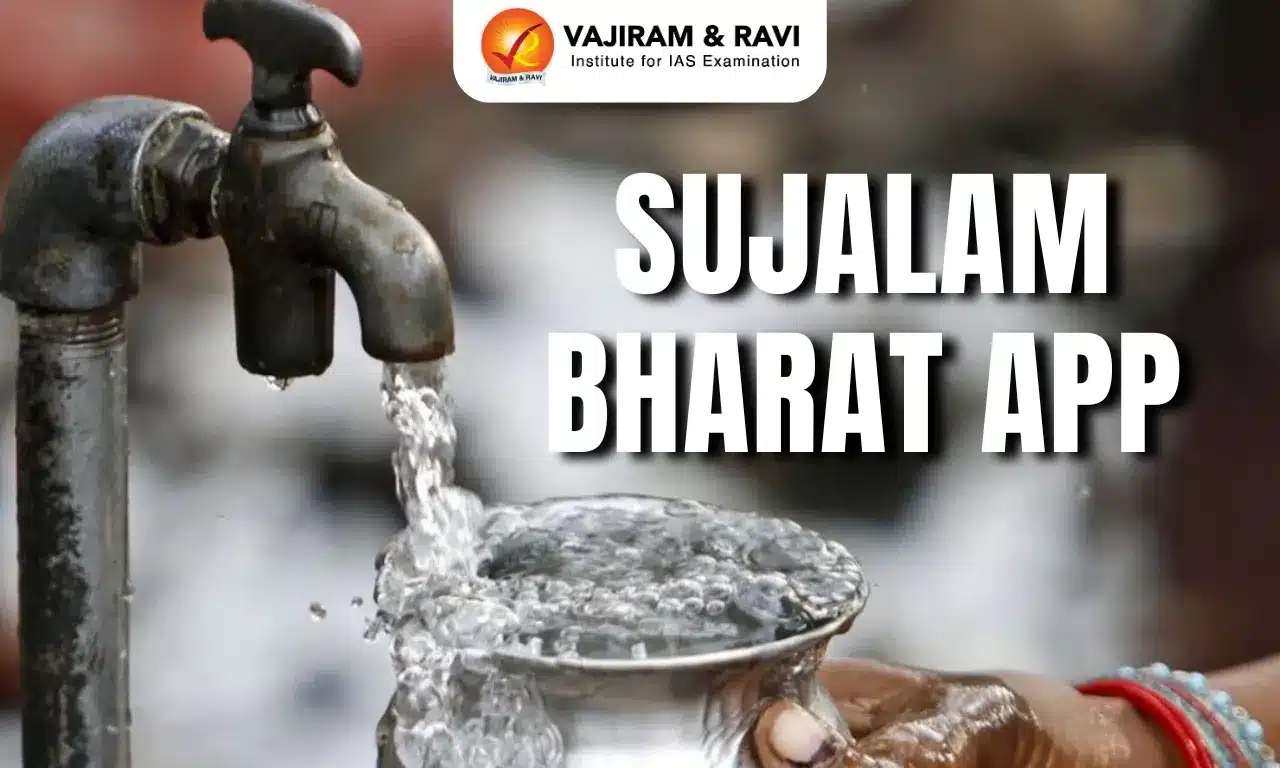About Thanjavur doll
- The craft was brought to Thanjavur by Maratha ruler Raja Serfoji in the early 19th Century.
- In Tamil language, it is called Thanjavur thalayatti bommai.
- Thanjavur dolls are primarily of two kinds, one is the bobble-head version, and the other is the tilting doll version.
- Material used:
- Doll-makers use papier-mâché, plaster of Paris and other materials for the body.
- A mixture of vandal mann (fine silt deposited by rushing streams of water), kali mann (clayey riverbed mud), and manal (loose aggregate) is required to make the dolls’ pedestals.
- Copper sulphate powder is added as a fungicide.
- Process:
- All the dolls have a lightweight body made of tapioca flour, papier-mache and plaster of Paris cooked and kneaded to the consistency of ‘roti’ dough.
- Each toy is made in halves, by pressing the rolled-out ‘doll dough’ into cement moulds, with liberal dusting of chalk powder.
- Dolls pass through at least seven stages from mould to assembly before they are packed for despatch, with each step, such as painting the facial features and costume embellishments, requiring a skilled artisan’s attention
- The dancing doll has four sections (including the arms that are individually glued to the torso), each balancing on the other with the help of inner metal loop hooks that create the light bobbing movement.
- It earned the Geographical Indication tag in 2009.
Q1) What Is Geographical Indication (GI) tag?
It is a sign used on products that have a specific geographical origin and possess qualities or a reputation that are due to that origin. This is typically used for agricultural products, foodstuffs, wine and spirit drinks, handicrafts and industrial products.
Source: Keeping Thanjavur doll industry out of the doldrums is no child’s play
Last updated on December, 2025
→ Check out the latest UPSC Syllabus 2026 here.
→ Join Vajiram & Ravi’s Interview Guidance Programme for expert help to crack your final UPSC stage.
→ UPSC Mains Result 2025 is now out.
→ UPSC Notification 2026 is scheduled to be released on January 14, 2026.
→ UPSC Calendar 2026 is released on 15th May, 2025.
→ The UPSC Vacancy 2025 were released 1129, out of which 979 were for UPSC CSE and remaining 150 are for UPSC IFoS.
→ UPSC Prelims 2026 will be conducted on 24th May, 2026 & UPSC Mains 2026 will be conducted on 21st August 2026.
→ The UPSC Selection Process is of 3 stages-Prelims, Mains and Interview.
→ UPSC Result 2024 is released with latest UPSC Marksheet 2024. Check Now!
→ UPSC Prelims Result 2025 is out now for the CSE held on 25 May 2025.
→ UPSC Toppers List 2024 is released now. Shakti Dubey is UPSC AIR 1 2024 Topper.
→ UPSC Prelims Question Paper 2025 and Unofficial Prelims Answer Key 2025 are available now.
→ UPSC Mains Question Paper 2025 is out for Essay, GS 1, 2, 3 & GS 4.
→ UPSC Mains Indian Language Question Paper 2025 is now out.
→ UPSC Mains Optional Question Paper 2025 is now out.
→ Also check Best IAS Coaching in Delhi

















